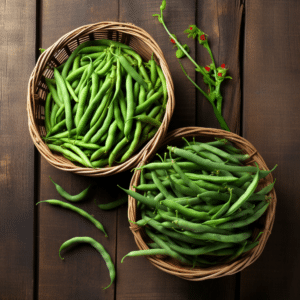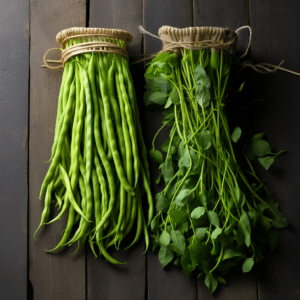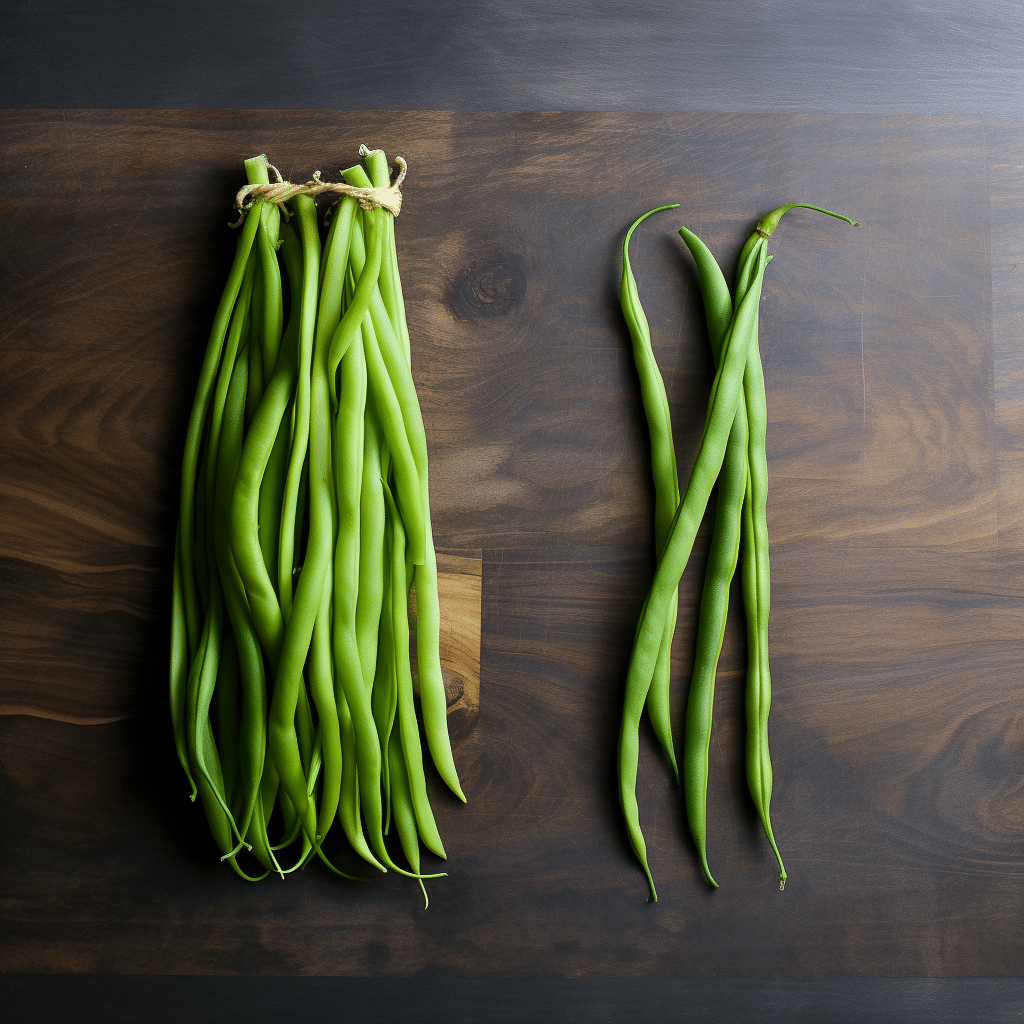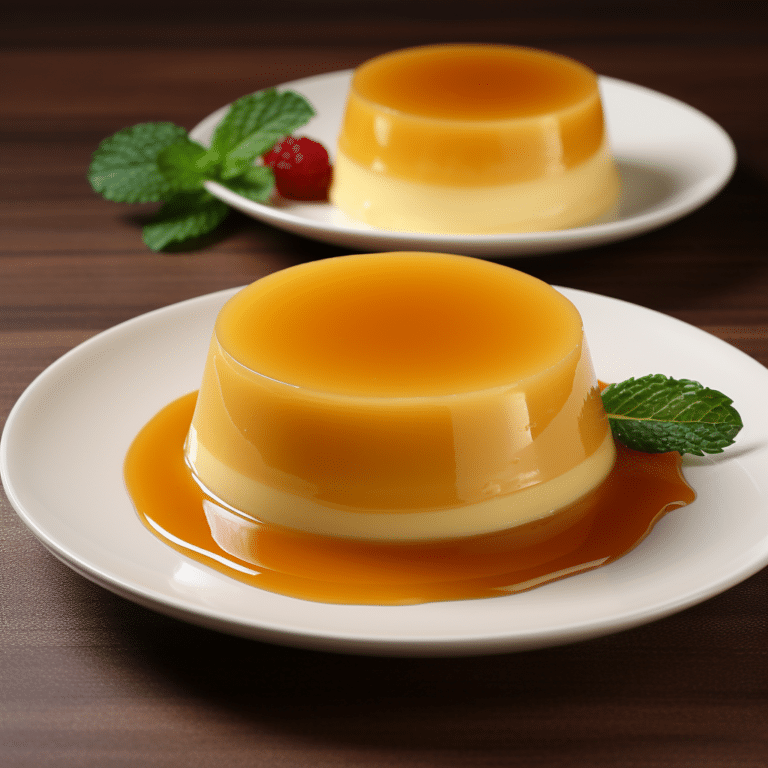Yard Long Beans vs Green Beans: A Comparison
Beans are a delicious and nutritious food that pairs well with many foods. They are high in dietary fiber, and essential nutrients like folate and potassium. There are also many ways to cook beans, frying, boiling, baking, stewing, or adding them to salads.
Not all beans are the same. Beans come in different types, although they belong to the same legumes family. Yard long beans and green beans are two popular bean types. They are both considered vegetables and are used the same way in culinary. They are interchangeable, and you can use one in recipes that calls for the other. So, how do they differ? Let’s dig deeper!

Yard Long Beans vs Green Beans: Overview
As the name suggests, yard long beans are longer than green beans. These beans have a stronger taste with more heat-resistant abilities. Their pods also come in different colors. Unlike green beans, yard long beans belong to cowpeas genera.
Green beans are shorter and come from various common bean plants. They have almost the same nutritional profile as yard long beans but differ slightly in flavor. Their pods come in a single color and have various favorable optimum temperature conditions.
There are several ways in which yard long beans and green beans are different. They include:
Length
The first notable difference you get to see between the two types of beans is in their length. Yard long beans are longer than green beans. They can measure up to 45 cm long.
On the other hand, green beans are shorter and measure up to 12 cm. This indicates that yard long beans can be five times longer than green beans.
Yard long beans also have more bean seeds than green beans. There are 8-20 bean seeds in exceedingly long pods of yard long beans.
Type Of Plant
Yard long beans are a climbing type of cowpea. As such, they need support from other plants to grow and develop well. Green beans come from the common bean plant and can be either pole beans or bush beans. They, therefore, don’t require any support to grow.
However, both the bean varieties have nitrogen fixing abilities and can thus, be used to boost soil quality.
Type Of Genera
There are many different types of legumes, common beans, cowpeas, soybeans, etc. Yard long beans belong to the cowpeas genera – Vigna unguiculata. This is the same genera that black-eyed beans belong to.
Green beans are obtained from common bean plants which belong to Phaseolus lunatus. The beans are harvested from various common bean plants when they’re still immature, making them have green pods.
Therefore, yard long beans are more closely related to black-eyed beans than green beans. That’s so because the former two belong to the same genera that differ from the latter.
Optimum Planting Temperatures
Yard long beans are usually grown commercially, mainly in Africa and some areas of Asia. The temperature of these regions is warm, making it ideal for their growth. The best time to plant Yard long beans is during summer when the temperatures are nice and warm. Growing yard long beans at other times of the year may affect its growth, leading to poor yields.
Green beans do best in warm temperature regions. However, they have a more extensive temperature range suitable for their growth than yard long beans. Green beans can do best at temperatures between 65 and 85 degrees Fahrenheit.
Appearance Of Pods
Both yard long beans and green beans have edible pods. However, the pods don’t look the same.
Besides length, yard long beans usually have pale green smooth pods that may be spiral, linear, or curved. The pods may sometimes have a purple or brown color.
Green bean pods have a green color and are smooth, slender, and long. But they are only linear and don’t come in other orientations like curved or coiled.
Taste
Both yard long beans and green beans have a sweet taste. However, yard long beans have a more solid flavor, while green beans have a subdued taste.
Some compare the taste of yard long beans to asparagus. And that may be the reason why yard long beans are sometimes called asparagus beans.
Use In Culinary
Both yard long beans and green beans can be cooked and eaten the same way. They are also interchangeable in recipes.
However, yard long beans have different heat tolerance from green beans. Yard long beans can withstand more heat and prolonged cooking. For this reason, they are perfect for recipes involving longer cooking times like stews. Green beans have low heat tolerance and are perfect for dishes that don’t require prolonged cooking, like stir-fries and salads.
Health Benefits Of Yard Long Beans
Yard long beans are low in calories, making them great to be used as part of a weight loss diet. These beans are also packed with vitamins A and C, which play a crucial role in strengthening the immune system and improving skin and vision.
Yard long beans are also rich in dietary fiber. Fiber is an essential nutrient good at improving satiety and preventing constipation.
Health Benefits Of Green Beans
Green beans, too, have an excellent nutrition profile. They are a great source of vitamins A, K, and C. These vitamins play a vital role in boosting your immune health and preventing excessive bleeding (vitamin K).
Green beans also provide considerable calcium needed for healthy bones and teeth. They are also rich in antioxidants that reduce oxidative stress and fiber, which help fight constipation.

Conclusion
Yard long beans and green beans have a lot in common. However, they’re not entirely the same. Yard long beans belong to the cowpea genus and are long with a more intense flavor. They are also more heat resistant, making them ideal for prolonged cooking.
Green beans come from green beans variety of plants. They are shorter with a mild flavor. Green beans do well across various temperature conditions and have low heat resistance. They are also very nutritious and form part of a regular healthy diet.






